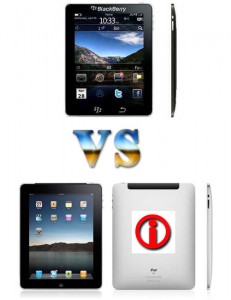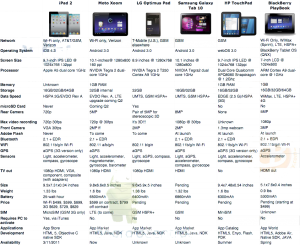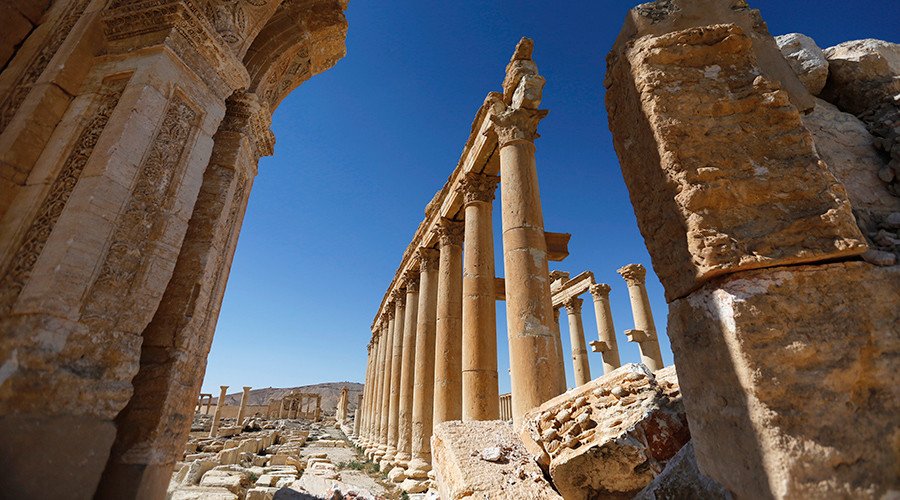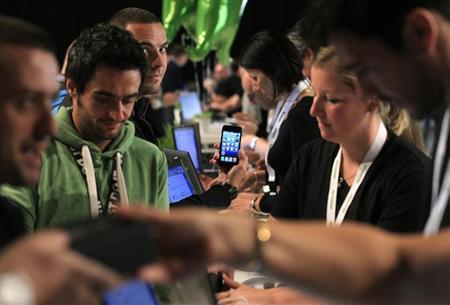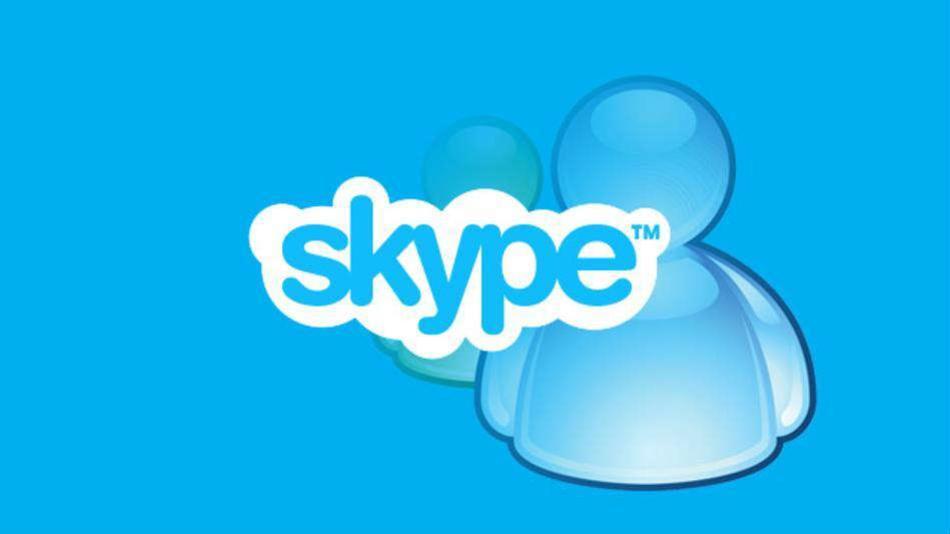The tablet wars are officially on. And this battle will be decided not only by consumers and gadget lovers seeking the latest and greatest slates, but also by businesses and corporate workers looking for the next game-changing productivity tool. You can expect to see many Android-based tablets from the likes of Motorola and Samsung, just to name a couple of manufacturers. Two of the most anticipated tablets of 2011 are Apple’s iPad 2 and BlackBerry-maker Research In Motion’s (RIM) BlackBerry PlayBook tablet.
Apple unveiled its lighter, thinner and faster rendition of the iPad, the iPad 2, with enough upgrades to give a tough fight to the current breed of Android, webOS and QNX-based tablets.
While Apple is traditionally known as consumer-oriented company, RIM has in the past mostly catered to businesses with a secondary consumer focus. And like these two technology giants, their respective tablets are worlds apart when it comes to enterprise features and functionality. Which tablet is best for your business? Here are several key considerations that enterprise IT staffs and business users should take into account when comparing Apple’s shiny iPad 2 to RIM’s workhorse BlackBerry PlayBook.
Operating System :
Apple iPad 2 runs on the latest edition of iOS, the iOS 4.3, which brings a faster Safari browser experience, enhancements to AirPlay and new iTunes Home Sharing feature to the tablet. RIM’s PlayBook runs on QNX which is a departure from its older BlackBerry OS. RIM bought QNX Software Systems, a maker of real-time operating system, in April 2010. QNX created the Neutrino real-time operating system, software well adopted by the automobile industry to power Bluetooth integration, device connectivity and similar systems. Information Week had reported that QNX OS offers a different multi-tasking experience as it keeps apps running simultaneously rather than suspending them. However, in the OS category the favor tilts on Apple’s side as its iOS is tried and tested while RIM’s QNX has yet to prove its mettle.
Processor:
Engadget described its experience with iPad 2 as “insanely fast” and the increase in speed can be ascribed to the new A5 system-on-a-chip that powers the iPad 2. Under the iPad 2 hums an A5 dual-core 1GHz chip. However, RIM has the processing guts to take on iPad 2 with its dual-core 1GHz TI OMAP processor. Engadget had earlier reported that TI OMAP 4430 – the processor that PlayBook uses – NVIDIA Tegra 2 and Samsung Exynos were benchmarked on browser and graphical points by AnandTech for smartphones. LG Optimus 3D’s TI OMAP 4 came out trumps with significant improvements, beating the likes of iPhone 4 and Motorola Atrix. The news certainly bodes well for PlayBook.
Security
Perhaps the most important factor that any organisation thinking about a tablet deployment must take into account is security.The PlayBook tablet was designed with security in mind, according to RIM, and though the company hasn’t revealed exactly how future versions of the PlayBook will secure corporate data, the initial Wi-Fi only version won’t store any corporate data on the device at all. Instead, the PlayBook will access corporate resources by tethering to a BlackBerry Enterprise Server (BES)-connected BlackBerry smartphone. In other words, the Wi-Fi only BlackBerry PlayBook will need to connect to a corporate BlackBerry smartphone for secure access to enterprise mail, calendar, tasks, etc. And while corporate data will be accessible via a smartphone-connected PlayBook, no enterprise data is ever stored on the tablet, making it an ideal option at least from a security perspective, as no data leaks if that device is lost, stolen or hacked. However, the need for a BlackBerry smartphone is a clear disadvantage for organisations that don’t already use RIM handhelds, and this fact will no doubt lead some companies to opt for the iPad 2 or another tablet over RIM’s offering.
Organisations that already have BES should feel relatively secure in deploying PlayBooks, since no additional security measures are necessary and no sensitive information is ever stored on the PlayBook.
The iPad 2, on the other hand, connects to Microsoft’s Exchange infrastructure for most of its corporate security features, as a BlackBerry smartphone would to BES. And a variety of third party mobile device management (MDM) offerings from companies like BoxTone and Zenprise are available to add additional iPad/iOS-related security features. So, to sum that all up, the BlackBerry PlayBook should be a no-brainer for companies that are already on BlackBerry, and deploying the PlayBook shouldn’t require any additional IT support beyond basic instruction, since all PlayBook-related IT policies are pushed through BlackBerry smartphones.
Organisations on Exchange but not on BES, or companies that have already invested in tools to help bolster iOS security, may be better off with iPad 2, since deploying BES and BlackBerry smartphones is currently required to access secure corporate data via PlayBook. Also, RIM has kept tight-lipped on the subject of how future PlayBook versions, the RIM tablets with cellular radios, will connect to BES, which means organisations may have to address additional security and deployment challenges with those devices. Many industry-watchers believe the process will be significantly different and won’t require BlackBerry smartphones, though RIM hasn’t offered any solid details. This could be frustrating for organisations that are anxious to deploy tablets, and it could push those organisations toward Apple and away from RIM and its PlayBook.
Size & Battery:
One obvious difference between RIM’s PlayBook and the iPad 2 is size. RIM’s PlayBook is significantly smaller, at 7.6 inches in height and 5.1 inches in width, compared to the iPad 2, which is 9.5 inches high and 7.3 inches wide. As such, the BlackBerry PlayBook suits organisations that value portability over a larger display, and the iPad 2 appeals to companies looking for the most screen real estate available, regardless of portability constraints.
Apple iPad 2 with a gamut of features on display returns 10 hours in battery life while PlayBook returns 6 hours in battery life. However, Engadget stated that poor battery life on PlayBook was reported because all testing on PlayBooks was done on pre-beta units. PC Magazine reported that PlayBook’s dismal battery performance is because it incorporates Adobe Flash.
Connectivity and availability
RIM has stated that the Wi-Fi only version of its PlayBook tablet will become available in the first quarter of 2011, meaning before the end of March. However, recent rumours suggest the device will launch on April 10, and that sounds about right to me. The BlackBerry-maker also announced HSPA+ and 4G, WiMax and LTE versions of the PlayBook, though it didn’t offer any launch-date specifics, saying only that the WiMax version should become available to Sprint customers sometime this summer.
Apple didn’t beat around the bush with its iPad 2 launch. The company announced a March 11 release date the same day it unveiled the next generation iPad. And the tablet will be available with a variety of wireless connectivity options on March 11, including a Wi-Fi only version, an iPad 2 with both CDMA 3G support and Wi-Fi and an iPad 2 with GSM 3G and Wi-Fi.
That means Apple’s iPad 2 has an advantage over the BlackBerry PlayBook in that it should be available a full month before RIM’s tablet. However, the iPad 2 only supports 3G CDMA and GSM wireless frequencies, i.e., no 4G for the iPad 2. The lack of 4G support in the iPad 2 seems to suggest Apple will announce either an upgraded version of the iPad 2, or possibly an iPad 3, in the not so distant future. So the iPad 2 could be a better option for organizations that don’t want to wait until next month for a tablet deployment, even though the device only currently supports “last generation” 3G cellular wireless. Companies for which cellular data transfer speeds are a priority, or that don’t want their tablets to feel outdated six months down the road, may want to skip the iPad 2 and opt for one of the 4G PlayBooks when they’re released this summer.
Pricing
While no official pricing has been announced for any of the known versions of RIM’s BlackBerry PlayBook, rumor suggests the entry level, 16GB, Wi-Fi only PlayBook will sell for the same price as he 16GB, Wi-Fi only iPad 2: $499.99. The 32GB Wi-Fi only iPad 2 goes for $599 and the 64GB Wi-Fi iPad sells for $699. Apple also announced pricing for its 3G + Wi-Fi iPads: 16GB, $629; 32GB, $729; 64GB, $8.29. The PlayBook will also be available in 16GB, 32GB and 64GB versions, and RIM could potentially undercut Apple in pricing for its HSPA+ and 4G PlayBook. If it does, pricing could become a competitive advantage for the BlackBerry maker.
RAM
In typical Apple fashion, the company left out a number of noteworthy facts from its online iPad 2 technical specifications lists, one of the most glaring of which is the lack of any information on the iPad 2’s RAM. While I cannot say for sure exactly how much RAM will be found inside the iPad 2, one UK Apple representative recently said that the device would ship with a meager 256MB of RAM, less than the 512MB found in the current iPhone 4 smartphone. If that is the case, the iPad 2 and its owners are going to experience some performance “hiccups,” to say the least, regardless of just how powerful its dual-core processor proves to be. It’s more likely that the iPad 2 has at least 512MB, but Apple’s silence on the subject is slightly worrisome.
The BlackBerry PlayBook on the other hand packs a full GB of RAM. The iPad 2 could have as much as 1 GB of RAM, but I don’t see the device shipping with more than that. So on the subject of RAM, the first generation PlayBook packs the same amount or more than the iPad. From an enterprise perspective, the amount of RAM packed into a tablet could be significant, especially if organisations plan to run resource-intensive apps or services alongside each other.
Cameras and video conferencing
Both of RIM and Apple’s tablets have front facing and rear cameras. However, Apple hasn’t offered many details about the digital shooters it will ship with the iPad 2, saying only that the back camera is capable of capturing 720p, HD video up to 30 frames per second with audio. The iPad 2’s lower resolution front camera takes VGA video up to 30 frames per second with audio. But Apple didn’t offer any solid details on still-camera megapixel counts, specifying only that the rear camera has 5X digital zoom and the front camera takes VGA quality images.
RIM’s BlackBerry PlayBook tablet packs a 3MP front-facing camera and a 5MP rear shooter, which can grab 1080P HD video. So for still image and video capture, which could be valuable to remote staffers in warehouses and businesspeople in boardrooms, the PlayBook appears to have the iPad 2 beat, at least in resolution.
Apple has a slight advantage over RIM when it comes to video conferencing, since it already has its own proprietary video-conferencing application and service, called FaceTime. But RIM must have some sort of video-conferencing offering up its sleeve, so we’ll very likely see a related BlackBerry-announcement in the days or weeks following the PlayBook’s release.
Apps:
iPad 2 scores over PlayBook as it has about 300,000 apps in its app store. However, RIM’s QNX still needs to gain traction among the developer community before a range of apps can come to PlayBook. However, InformationWeek had earlier reported that in one of the company videos, RIM had shown how existing Adobe AIR and Flash applications can be converted into PlayBook apps. Also recently Bloomberg reported that RIM is working on software which will allow the device to run Android applications, in order to give its users more access to applications in the Android Market.
RIM is marketing its PlayBook as an enterprise complaint tablet. It thus offers a feature called BlackBerry Syncing that allows PlayBook to be in sync with a BlackBerry device over Bluetooth. After this, the PlayBook just becomes an extension of a BlackBerry phone. This will bode well for enterprise users even as Apple iPad and other Android tablets fail to offer such compatibility, something which allows RIM to specifically target its bread and butter clientele.
Here is a comparison between Apple iPad 2 and RIM PlayBook:
| Apple iPad 2 | RIM PlayBook | |
| OS | iOS 4.3 | QNX |
| Processor | A5 dual-core 1GHz | TI OMAP dual core 1 GHz |
| Display | 9.7-inch | 7-inch |
| Resolution | 1024×768 | 1024×600 |
| Memory | 16/32/64 GB | 8, 16, 32, 64 GB |
| RAM | N.A | 1GB |
| Camera | 2 cameras rear and front facing | 5 MP rear, 3 MP front-facing |
| Video Capture | 720p | 1080p |
| Video Playback | 720p | 1080p |
| Wi-Fi | 802.11 a/b/g/n | 802.11 a/b/g/n |
| Battery | 10 hrs | 6 hrs |
| Depth | 0.34 inch | 0.4 inch |
| Weight | 1.33 pounds | 0.9 pounds |
Durability
The following speculation should be taken with a grain of salt, since it is just that: speculation. But the BlackBerry PlayBook tablet will very likely prove to be more durable than the iPad 2, due mainly to the smaller size of its display and rubberlike outer casing. And durability will surely be an important consideration for enterprises, especially those with remote workers in less than forgiving industries and environments. In general, the most vulnerable part of a tablet PC is its glass display. And the larger that glass display, the larger the likelihood that the display will be damaged. I have not yet handled the iPad 2, and as such I can’t really gauge its durability. However, I have spent quite a bit of time with pre-release versions of the PlayBook tablet and it seems much more durable than the first generation iPad, which I’ve also had time to handle extensively. The fact that the iPad 2’s display is very similar if not exactly the same as the first iPad’s screen makes me think the two models will be similarly durable. Of course, RIM, Apple and countless third party case manufactures will offer products to help protect your tablet, but those products will often add bulk, and organisations that want the smallest, lightest tablet possible, won’t want to sacrifice portability for protection.
So the BlackBerry PlayBook may be better suited for companies with mobile workers in rough or demanding environments.
By SRI RAJOWAN







